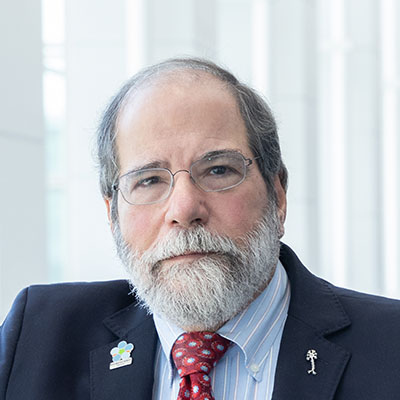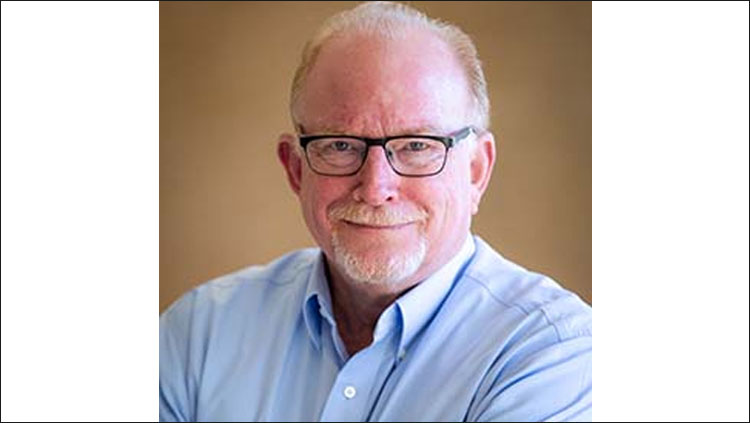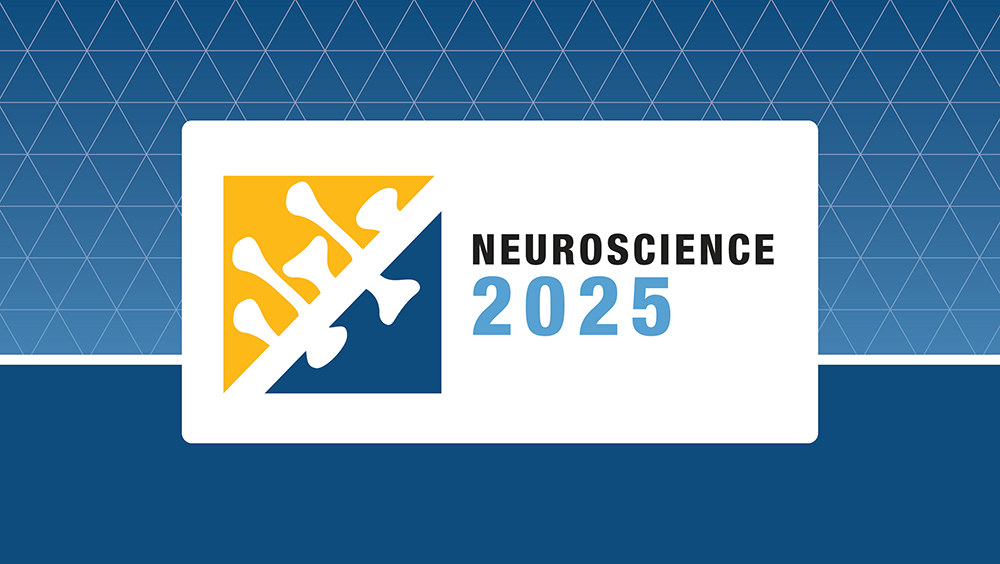Q&A: Marty Saggese, SfN Executive Director

Marty Saggese
Marty Saggese has been executive director of the Society for Neuroscience (SfN) since January 2002. Under his leadership, SfN was named by The NonProfit Times as one of the “50 Best Nonprofit Organizations to Work for in 2010,” and Marty was named by CEO Update as one of the “Top Association CEOs” in 2013. He serves as the vice chair of the International Brain Bee (IBB) Board of Directors and received the American Brain Coalition's Leadership Award in 2016.
Before joining SfN, Marty was the deputy executive director and CFO of the American International Health Alliance, a Washington, D.C.-based nonprofit. A native of Brooklyn, New York, he previously served as vice president for management and financial services at the Long Island Rail Road, and as deputy commissioner for management and administrative services at the New York City Department of Housing Preservation and Development. He received his B.A. from Wesleyan University in Connecticut and a Master’s in Public Administration (M.P.A.) from NYU’s Wagner School of Public Service.
Neuroscience Quarterly (NQ): You started as SfN’s executive director in 2002. At that time, the world was dealing with the aftermath of the September 11, 2001, terrorist attacks on the United States, the just-completed doubling of the NIH budget, and the growing relevance of the internet in every aspect of daily life. What immediate challenges to the Society were you charged with addressing by SfN Council?
Marty Saggese (MS): My predecessor left in April of 2001, and I started in January of 2002. Neuroscience 2001 in November that year went off without a hitch and without an executive director. The successful annual meeting told me that a lot of SfN operations didn’t need to be torn down and rebuilt — I could focus my energies on the immediate challenges. I felt my biggest challenge, my immediate priority, was to instill a sense of stability with SfN’s staff and Council. One example of stabilizing staff culture was organizational, like formalizing the creation of a tier of senior directors on staff who report to me; previously each department head (up to 13!) had reported to the executive director.
I’ve viewed my role as a steward who facilitates decision-making by Council and then executes those decisions well.
To support Council, especially as they worked through significant governance changes that needed to occur, it seemed to me that a “servant leadership” mindset would best serve the Society. It would have been a mistake to have tried to come in, taken charge, and solved SfN’s problems as I saw fit. But SfN is not my Society to run — it belongs to the members as represented by Council. I’ve viewed my role as a steward who facilitates decision-making by Council and then executes those decisions well. Passing that servant-leadership mindset on to the rest of staff over the years has been a long-term priority of mine.
A final priority was to strengthen SfN’s relationships with domestic and international partners. To do this, I did a lot of traveling to meetings like FENS and IBRO, to our funding partners like the Dana Foundation, and to a huge number of events on Capitol Hill hosted by our advocacy partners. You can earn a lot of credit by just showing up, especially if your organization hasn’t shown up before. Investing in these relationships for 24 years has paid SfN dividends even beyond what I might have predicted.
NQ: The SfN annual meeting remains one of the largest scientific meetings in the world. What do you think explains the enduring success of SfN’s annual meeting?
MS: Two interdependent factors are key to the meeting’s success: the science and SfN’s ability to bring everyone studying that science together.
SfN’s core business is that we host venues where great science gets shared. That’s what the annual meeting is. That’s what our journals are. That’s what BrainFacts is. That’s what our webinars are.
Because we convene everyone in neuroscience via multiple venues, people want to share their best science with SfN so it can be seen by everyone. The prime example of this is the poster floor at the annual meeting. I make a point to walk the poster floor every year and I always enjoy seeing 10 people having an animated discussion around a poster. Those 10 people are probably the majority of human beings on Earth researching that particular topic, and the SfN annual meeting is what brings them together.
To host a 20,000+ attendee meeting well, you also need a multitude of people dedicated to its execution. Yet, in our case, only a portion of the folks working on the SfN annual meeting are SfN staff. Many people who support Neuroscience 2025 and past meetings work for our longtime partners responsible for systems like the annual meeting’s registration platform, AV onsite at the convention centers, the transport company, organizing our hotel rooms, and managing the Exhibit Hall. To those long-term partners and their staff, SfN isn’t just another meeting — it’s their meeting, too. It’s all these eyes paying relentless attention to details like the shuttle bus schedule, free and stable WiFi, and functional AV that leave attendees with the sense of a successful meeting experience they want to enjoy again next year.
SfN’s core business is that we host venues where great science gets shared.
Most important, we have outstanding volunteers who serve on our Program Committee. They’re responsible for organizing the science in such a way as you can walk down a row of posters, or hear a series of talks in a minisymposium, and each presentation is related to the other. Our Program Committee — all our volunteers, really — agree to serve SfN because the time they spend organizing the science shared across the Society’s venues has a huge impact on the field. Without the remarkable dedication of our volunteers year after year, all the staff in the world couldn’t make an annual meeting successful.
NQ: Scientific publishing has experienced significant disruption over the past 24 years. What were some of your guiding principles in navigating such a difficult business space?
MS: Scholarly publishing has undergone two significant transitions during my time as executive director. The first was the transition from print to digital, which worked out in SfN’s favor. We were able to significantly cut printing costs as printers continually lost customers and were willing to renegotiate existing contracts for less money.
Now, when I talk to my peers who lead other scientific societies about BrainFacts, they always say “we should have a similar website!"
The second and more difficult transition is the ongoing shift toward Open Access (OA) publications. OA is thought of as a way to avoid journal subscription fees and paywalls, which is all well and good if you’re not a publisher. But as a publisher, SfN needs a financially stable business model to keep its journals alive. So, we took a two-pronged approach. To accommodate the OA aspirations in the environment, SfN launched eNeuro, our OA journal. At the same time, we used sensible business practices to maintain JNeurosci’s business model and the revenue it generates to support the Society’s many programs, while accommodating access changes required by some funders research.
NQ: Communicating science to the general public and policymakers has always been important, but the past few months have underscored that importance. How has SfN approached this responsibility during your time as executive director?
MS: Without support from policymakers and the general public, science doesn’t happen. And so communicating to these audiences is central to the value SfN offers its members. Many neuroscientists take time to talk to non-scientists, but they need SfN to choreograph events, amplify their messages and turn them into a strategy that ultimately makes a difference beyond the immediate audience.
On the advocacy front, the SfN Hill Days are one example of the Society organizing a multi-day event connecting member volunteers (NeuroAdvocates) with their elected officials to share the needs of the neuroscience community. But we don’t just engage our members, we coordinate with the much larger biomedical research advocacy coalition. SfN has been extremely active this year and making use of the strong relationships we’ve built with our coalition partners over the past 24 years. We are one of the larger organizations in the coalition, but I would say the role we play is often one of a “good follower.” We look to the deep advocacy and policy expertise in organizations like AAAS, Research!America, the Ad Hoc Group for Medical Research and the Coalition for Life Sciences to align our messaging, and determine on what topics, when, and how to engage with policymakers. Then we leverage our nearly 30,000 members to deliver the emails, phone calls, and office visits that the coalition relies on to deliver and underscore the desired messaging.
We have a team — from top to bottom — that is completely focused all year on developing and executing a successful annual meeting.
When it comes to sharing neuroscience with the public, the BrainFacts book was SfN’s primary way to communicate with educators and high school students about neuroscience since it launched in 1990. But with how technology and the web have evolved, we knew we needed an online platform to reach the brain-curious public. With the support of Council, and with initial external funding, SfN launched BrainFacts.org in 2013 to be that online platform.
Now, when I talk to my peers who lead other scientific societies about BrainFacts, they always say “we should have a similar website!” But they don’t, because establishing and maintaining a website that publishes high-quality, science-focused stories in an accurate, public-friendly fashion is a lot of work and costs a lot of money. I am quite proud that we were able to secure foundational funding partners like the Kavli Foundation and the Gatsby Charitable Foundation to reinforce SfN’s own investment in launching the BrainFacts website. One of the Society’s current priorities is to secure additional outside funding from institutions and individuals to maintain BrainFacts’ excellence in the coming years.
These advocacy and public outreach efforts are part of the process of giving back to the American people, and the people of the world, what they give SfN and our members.
NQ: SfN has a strong operational foundation that’s the envy of similar-sized societies. How did you build that foundation, and why was it such a priority for you?
MS: From one perspective, an operational foundation means the ability to get stuff done. And as staff and volunteers know very well, SfN excels at getting stuff done. Imagine an organization that doesn’t know how to ensure 20,000+ meeting attendees can get to their podiums and posters, exhibits and events on time. Well, they won’t have 20,000+ meeting attendees for long.
I feel intense responsibility to ensure the SfN annual meeting goes well, and I consciously share that sense of responsibility with the entire SfN staff. As a result, we have a team — from top to bottom — that is completely focused all year on developing and executing a successful annual meeting.
When you prove you can get stuff done like a big annual meeting and successful journals, people want to participate in those venues. With more people comes more money, which can then be reinvested in the Society’s mission and stability. Now, occasionally there may be members who are uncomfortable with focusing on money. “SfN is not-for-profit. Why do you make money?” is a question I’ve heard many times. My response has always been “Not-for-profit is a tax status, not a business model.” We need to have more revenue than expenses in order to sustain the work of the Society in perpetuity.
So, an operational foundation can also be looked at from a financial perspective. When I started, SfN didn’t have savings to cover a year of expenses. In other words, if an annual meeting went poorly or had to be cancelled for some reason, the Society would have been in financial trouble. Fast forward to the cancellation of Neuroscience 2020 because of COVID-19. By then we had built a reserve that allowed us to survive the loss of the annual meeting without drastic actions that other organizations were forced to take. That reserve contains resources worth well over two years of the Society’s expenses today. While growing that reserve, SfN built and owns its office headquarters in Washington, D.C., meaning that we have a permanent home. These financial and physical assets form an operational foundation that ensures the Society’s existence going forward.
NQ: We’re going to ask you the same question you were asked in this space when you started in early 2002, as the question is as relevant today as it was then: “… we are dealing with the inevitable movement toward a more technological future. How do you envision JNeurosci and other Society activities being affected by this direction?”
MS: At the beginning of my time at SfN, we were beginning to use a lot of software that we didn’t understand ourselves and didn’t have the capacity to understand. That presented the Society with significant business risk. So, we have very intentionally worked with expert technology partners who have helped our staff to understand and support increasingly complex and important software tools.
Whether it’s the use of online publishing platforms for our journals, creating and maintaining SfN’s websites, developing our social media channels, and now exploring the use of AI tools, it’s the Society’s responsibility to engage with technologies that allow it to effectively and efficiently execute its mission. I expect that SfN will continue to engage with and deploy new technologies long into the future.
NQ: When you step down in January 2026, you will have served as SfN’s executive director for 24 of the Society’s 56 years. As you reflect on all the time you spent serving the Society and its members, what sticks in your mind?
MS: One thing that sticks in my mind is the evolution the Society’s governance has undergone during my time here and how that evolution has enabled our volunteer leaders to really drive SfN forward.
The 1990s saw the SfN annual meeting double in size. But SfN’s governance — how decisions were made, how staff interact with volunteers, the committee and membership structure — had not kept up with that growth. I supported Council in professionalizing SfN’s governance; those changes are detailed elsewhere. The results were significant.
With our improved governance structure and practices, we built better volunteer-staff communication so that volunteer voices were heard. Which gets back to my point earlier about servant leadership — it’s not my job, or any staff member’s job, to decide how SfN invests its money and volunteer time. Staff’s job is to provide Council and our volunteers with good options, and with the structure and information they need to decide how to best advance the Society’s mission.
Once we built a structure that effectively communicated volunteer interests to staff, we established a consistent practice of having staff develop a set of choices for volunteers to consider that address their interests. And when provided with well-researched options and choices, I’ve found our volunteers are more confident to make decisions that will drive the fate of the Society for years to come.
By professionalizing SfN’s governance, staff have become better stewards, and volunteers have been better positioned to lead and drive the organization’s strategy.
NQ: Any words of wisdom for your to-be-named successor?
MS: I wish my successor nothing but success, and I will do everything in my power to ensure that success.
By professionalizing SfN’s governance, staff have become better stewards, and volunteers have been better positioned to lead and drive the organization’s strategy.
When I started as executive director, the conventional wisdom was that the average tenure of an executive director was seven years. Twenty-four years later, it’s now considered that the average tenure is less than five years. Think about how many organizations had to go through multiple leadership changes to drop the average tenure two years during my time here!
If I had to point to one thing that supported my long tenure with SfN, it would be the servant leadership mentality I brought to the job every day. That mentality has now spread throughout the staff and volunteer culture. So, if there’s one element that I think will be a necessary — but not solely sufficient — condition for the success of the next executive director, it’s for them to embrace and practice servant leadership.























